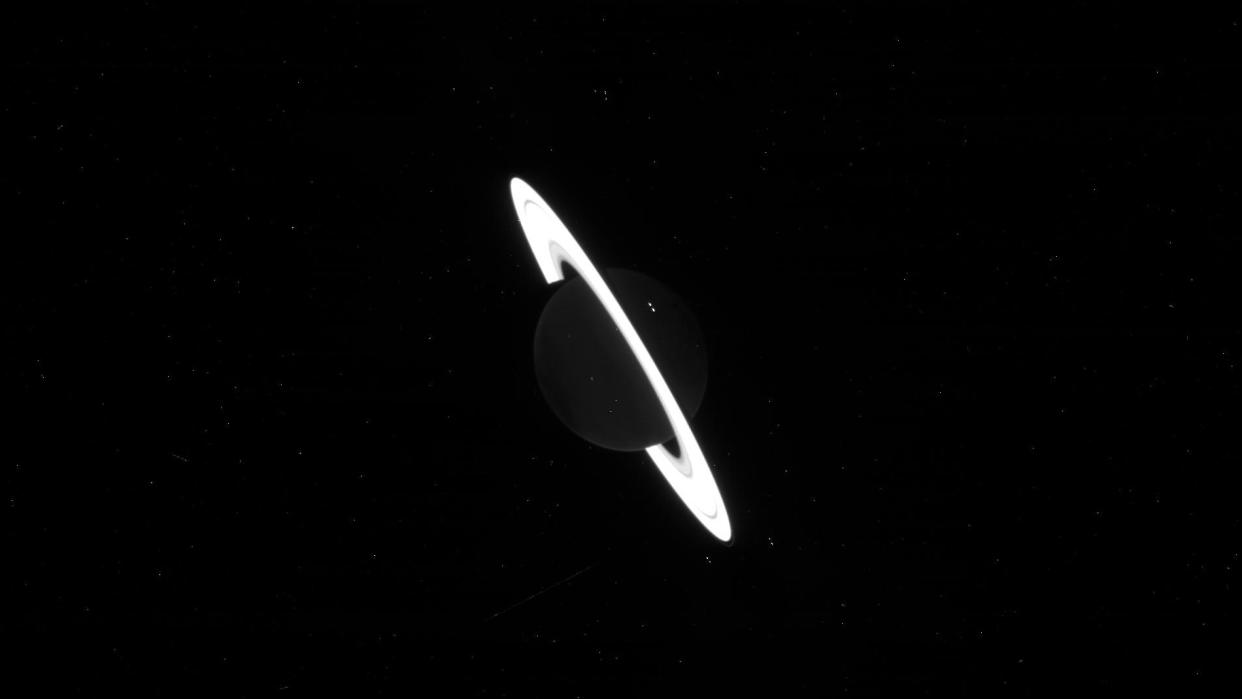See Saturn disappear in eerie, unfinished James Webb telescope images

The James Webb Space Telescope (JWST) has become synonymous with jaw-dropping, full-color photos of some of the most compelling cosmic landscapes in the universe. But, as new photos of Saturn reveal, even JWST's unprocessed black-and-white images are stunning.
JWST captured the new images of the ringed planet between June 24 and 25 as part of a project led by Leigh Fletcher, an astronomer at the University of Leicester in the U.K., to study the planet's rings, moons and atmospheric composition. The pictures recently appeared on the telescope's unofficial live feed. However, they don't look like the banded gold orb you might imagine — at least, not yet.
Currently, the pictures are in stark — and somewhat eerie — black and white. In some of the images, Saturn and its rings look almost overly saturated with light. This is intentional; the black-and-white pixels actually represent a detailed account of the number of photons that the JWST's Near Infrared Camera collected. Later, scientists will process and colorize the images into something more instantly recognizable. For now, they remain a ghostly and rarely seen portrait of the planet's icy rings.
related stories
—25 jaw-dropping James Webb Space Telescope images
—James Webb Space Telescope hit by large micrometeoroid
Although the JWST has been operational for less than a year, it has already revolutionized our understanding of the universe and captured some of the most valuable — and some of the most beautiful — scientific photos ever produced. The telescope, which has three cameras, is designed to peer into the infrared spectrum. This allows it to capture light from the oldest stars in the universe, thanks to a phenomenon known as redshift.
As light travels, its wavelengths stretch from the short ultraviolet end of the spectrum to the long infrared end. Because of this, light from the universe's very oldest (and most distant) stars can only be detected in the infrared spectrum by very powerful instruments. But, as the new Saturn images show, the JWST can also snap breathtaking pictures much closer to home.
Saturn isn't the first body in our solar system to get a JWST photoshoot. Earlier this year, the telescope also captured gorgeous images of Uranus, revealing the giant planet's lesser-known rings in stunning detail. And last summer, the JWST snapped incredibly detailed photos of Saturn's neighbor, Jupiter.

